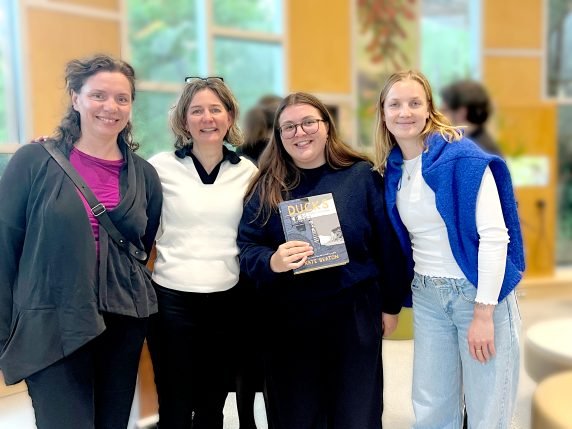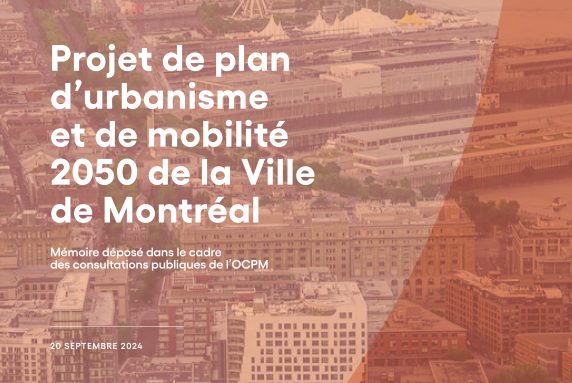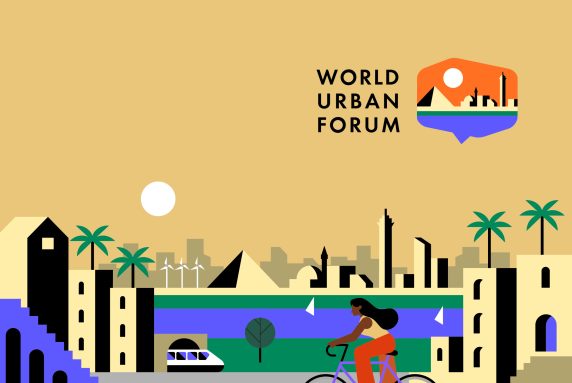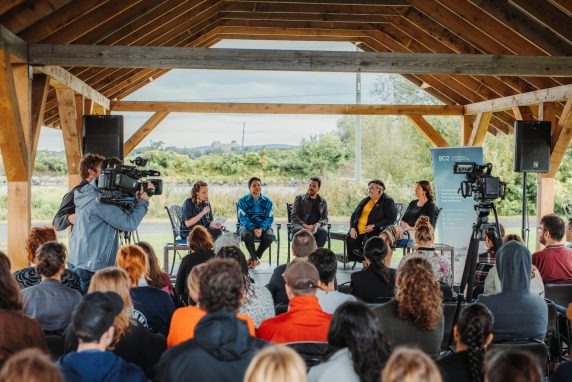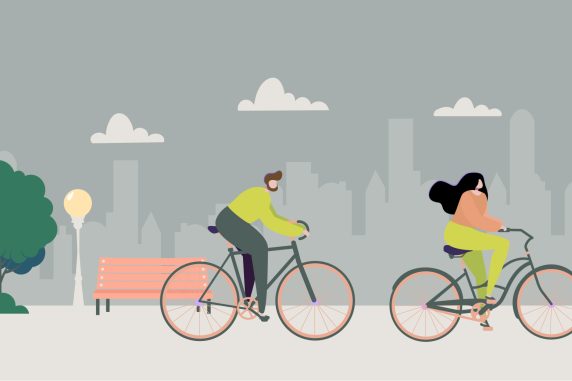Land use planning is transforming our living environments. Our experts dissect the issues raised by current events and share the news and ideas that make us progress together.

Réflexions BC2
Thoughtful and consensual conversion: the future North American golf courses
Chapters
Introduction
Between 1986 and 2005, 4,926 new golf courses were built in the United States alone. Over the last 15 years, the number of golf courses has fallen steadily, from 15,990 in 2006 to 15,014 in 2016. The trend is similar in Canada, where 158 golf courses closed between 2010 and 2015 and only 21 18-hole courses were built. In Greater Montreal, 12 golf clubs have closed since 2010, representing nearly 657 hectares of land with potential for use other than intensive outdoor recreation.
These many closures mark a trend toward the transformation of the sport of golf and its infrastructures. Indeed, landowners are increasingly turning to existing redevelopment options.
Redevelopment has been gaining in popularity for several years. In 2018, as part of the American Planning Association’s National Planning Conference, professionals addressed the issue during the “Golf Course Redevelopment and Conversion” presentation.
This article provides an overview of recent changes, conversion options, and best practices to ensure optimal and consensual redevelopment of golf courses. Lastly, it presents an overview of the regulatory changes that have recently come into effect in the Communauté Métropolitaine de Montréal, which will have a definite impact on golf course conversion options.
A changing sport
There are many reasons for the closure of golf courses. The saturation of supply in the early 2000s led to a reduction in the profitability of these infrastructures. Other factors influencing the sport’s popularity are the high cost of membership and equipment and the fact that golfers have less time to devote to leisure and practice.
With increasingly busy schedules, it’s difficult to set aside half a day on a regular basis for golf. Considering that it’s a sport whose technique is challenging to master and requires hours of practice, this can discourage many people from starting or persevering in this sport. Ultimately, the sport has yet to find a new player who attracts the crowds and the love of the fans as Tiger Woods did in the late 1990s and early 2000s. However, while the golf market is currently experiencing a correction, the sport is not dead by any means and remains popular with segments of the population.
The impact of the courses and their closure
Maintaining a golf course in a municipality has many benefits for the community.
These facilities represent a significant area of green space and provide outdoor recreational facilities for the population. These infrastructures help to preserve undeveloped space within urban areas, ensure the presence of a variety of wildlife, and filter rainwater.
However, these facilities also present several environmental problems. Maintaining such large tracts of land requires large quantities of water and the use of fertilizers and pesticides, all of which degrade real natural areas. Also, the construction of a golf course and its regular maintenance can disturb wildlife and negatively impact wetlands.
These infrastructures are costly to maintain and manage and require many employees. As the number of users dwindles, it becomes difficult to break even, and many golf courses end up turning a loss. Many owners choose to close or convert their facilities to counter the lack of profitability. But these decisions also have major consequences for owners and surrounding communities. Among these, the need to maintain the land despite its closure, the difficulty of finding a viable new use for large tracts of land, the loss of undeveloped green space close to well-established residential areas and the loss of outdoor recreational facilities present significant challenges.
Reconversion opportunities
Golf courses can be redeveloped in many ways. It is possible to keep a golf course in operation by reducing its size and redeveloping it in such a way as to free up space for the redevelopment of part of the site for residential purposes.
The complete closure of a golf course can allow the site to be redeveloped for residential purposes while preserving a section of green space. The complete closure of a golf course may also represent an opportunity to reconvert the entire site into undeveloped natural space accessible to the community.
The “Golf Course Redevelopment and Conversion” conference presented by the APA focused on three examples of conversion in different U.S. cities.
Palm Springs Country Club in California
After the closure of Palm Springs Country Club in California in 2007, air quality problems arose due to a lack of maintenance on the course. Drought, combined with a lack of regular irrigation on the golf course, led to wind erosion, with sand continually dispersed into the surrounding neighbourhoods. Moreover, because the course was poorly supervised, problems of vandalism began, making the surrounding residential areas less safe. To counter these new problems and maximize the development potential of this stretch of land, a conversion project was submitted. The project, which obtained the city’s authorization, called for 386 housing units, the retention of 47% green space, the addition of a public park and recreational facilities, and a pathway to connect the neighbourhood to a regional footpath.
The City of Palm Springs identified some best practices for golf course redevelopment to ensure the execution of the best possible project.
According to the city, with this type of project, it’s essential to recognize the importance of golf courses as undeveloped green spaces. The impact of the potential loss of these areas on neighbouring residents must be taken into account, and opportunities must be identified to propose other options. When drafting planning documents and urban planning by-laws, this potential for redevelopment must be properly defined. Standards should be introduced to force reasoned redevelopment, such as the obligation to retain a certain percentage of green space or require payment for the loss of green space. Authorized uses must also be regulated, buffer zones added, mandatory green spaces identified, and authorized densities established.
These guidelines provide towns and cities with greater control over the redevelopment potential of these areas while at the same time ensuring that developers are aware of the rules so that they can come up with a project suited to the sites.
Involving and discussing the proposed project with the community is essential to ensure its support. These various phases make it possible to improve the first version of the project submitted based on the various comments received and thus obtain the best possible project.
Las Vegas and Henderson
There are 14 golf courses in Las Vegas, two of which aren’t in operation. In recent years, two golf courses and one park have undergone redevelopment projects to maximize the developable potential of these lands. In 2018, to be proactive about these projects, the City of Henderson, south of Las Vegas, adopted an ordinance covering the closure, maintenance, and redevelopment of golf courses, parks, and open space.
The ordinance includes a requirement to provide a plan for the operation, maintenance, and closure of golf courses, parks and open spaces. This plan must be approved by the city, and the golf course, park, or green space must be maintained in the same condition as it was when it was closed. The ordinance also added criteria for use by the city council and the committees responsible for analyzing applications for zoning changes or redevelopment of this type of land (for the full text of the ordinance, see the “Further reading” section). These criteria provide a better framework for redevelopment and ensure that the public is consulted and informed about proposed projects.
Freehold Communities – Palm Springs, California
The Miralon project by Freehold Communities in Palm Springs, California, proposes the development of an “Agrihood”. This community development model integrates agriculture into a residential neighbourhood comprising single-family, multi-family and mixed-use homes.
The project aims to transform an existing – but never used – golf course into an olive and lemon orchard with community gardens and walking trails in addition to residential areas, communal infrastructure, and relaxation areas.
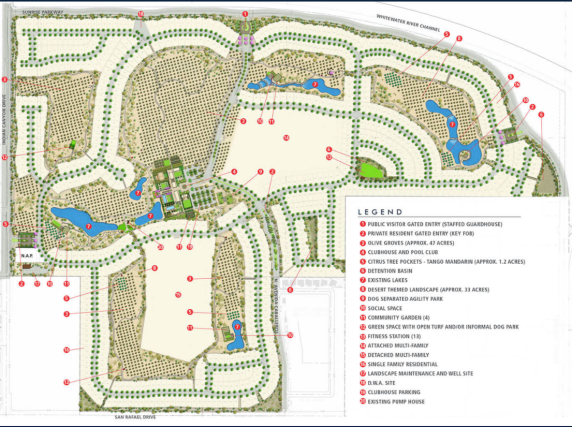
In total, the project covers 309 acres of land and offers 1,150 housing units. The overall plan and images form a redevelopment project that offers a range of options using a sustainable development approach in a relatively wealthy environment.
A combination of factors made the project possible. In 2016, a third of the golf courses weren’t profitable, and another third were barely breaking even. The cost of maintaining these infrastructures continued to rise, and the resources to keep them in place were limited. Other factors also contributed to the implementation of this redevelopment project. Growing concerns about the area’s drought conditions and the weather, community support for an alternative use for this green space, and the city’s collaboration in approving the project were decisive
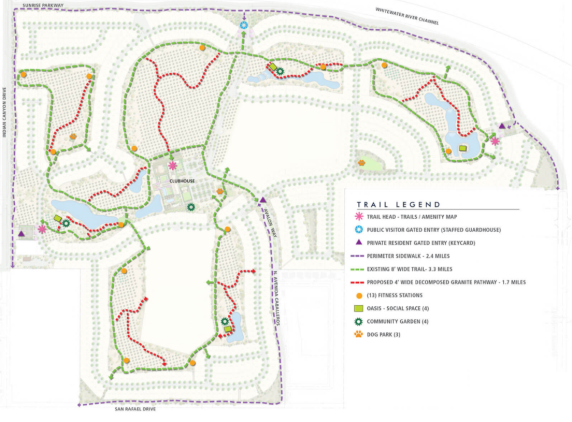
The Montreal Urban Metropolitain Community
With the growing popularity of golf course redevelopment projects over the last twenty years and climate change increasingly part of the daily discourse, we’re noticing another trend already present elsewhere in the world: converting golf courses into natural spaces and quality ecosystems. Many see this as a golden opportunity to have a positive ecological impact and play a key role in transforming land use and development.
Another example of this trend is the acquisition of golf courses by foundations or organizations, which then invest in transforming them. Such is the case, for instance, of the Frodsham Golf Course in Cheshire, England, acquired by the Woodland Trust and transformed into a public forest. In Belgium, Wisconsin, the Ozaukee Washington Land Trust purchased land and transformed it into the Forest Beach Migratory Reserve. The former clubhouse has been converted into a community centre, and numerous trails were created to cross areas of natural habitat, ponds, and wetlands.
Another trend is that of municipalities that own or become owners of former golf courses and decide to invest in and transform these spaces into public parks and paths. For instance, a Melbourne suburb has adopted a master plan to guide the transformation of the Elsternwick Park Golf Course into a new nature reserve. The town of Milton in Georgia decided to buy the Milton Country Club and invested millions of dollars to remove the asphalt paths and create a 52-mile network of paths linking parks and schools in the area.

On June 16, 2022, the Montreal Metropolitan Community (CMM) adopted Interim Control by-law no. 2002-97 concerning sectors presenting a potential for conversion to green space or a natural environment. The by-law came into effect on September 30, 2022, and has since been amended to include three additional golf courses. The aim of the by-law is to encourage the conversion and renaturalization of green spaces so that the CMM can achieve its target of protecting 17% of its territory by 2031. This measure is said to be necessary because, to date, only 10% of the territory has been protected. The by-law places an interim freeze on all development on the golf courses in question, prohibiting cadastral operations and banning new uses and construction until a revised Metropolitan Land Use and Development Plan comes into force. This by-law was adopted on the heels of the Metropolitan Land Use and Development Plan revision to give the CMM time to consider the development guidelines and rules to be defined for these vast areas across the territory.
However, the desire of regional and local authorities to convert golf courses into protected natural areas requires significant financial resources to acquire and develop them. This is where the bill to amend the Expropriation Act could significantly impact the viability of the vision and intentions to protect natural areas. If passed, the bill would mean that compensation would be set based on the market value of the expropriated property rather than on the value of the property to the owner. As a result, the valuation of the land would be lower, and it would be more affordable for cities or organizations to acquire. With a lower purchase price, some cities or organizations could have the budget to buy this land and invest in its development to make it accessible to the whole population.
Conclusion
Given that nearly 657 hectares of golf courses have closed since 2010 in Greater Montreal, the conversion challenge is very real. Taking the time to reflect on this trend and finding long-term solutions for both cities and developers are essential to ensure viable and high-quality golf course conversion or redevelopment. The coming into effect of the interim control by-law aimed at the conversion of green spaces has a laudable objective: to protect the environment and ensure the presence and sustainability of quality natural spaces on the territory. On the other hand, in the face of an unprecedented housing crisis, these vacant spaces offer a golden opportunity to develop land to meet demand, provided that it is located in a central and viable sector of a municipality.
Public consultation is a key element in ensuring the success of projects of this scale, and greater emphasis should be placed on securing the support of residents in neighbouring areas.
Since the trend is already well established, government bodies should ensure they have a vision for the conversion of golf courses on their territory and incorporate the appropriate planning standards into their regulations.
Clear guidelines will enable decision-makers, organizations, and foundations, as well as developers, to work with clear tools to deliver the best possible project.
For more details
Golf Course Redevelopment and Conversation webinaire disponible sur le site de l’American Planning Association – Présentation du 21 avril 2018 dans le cadre du National Planning Conference par l’American Planning Association
Caroline Brigham, AICP, Robert Summerfield, AICP, Bradley Shuckhar
City of Henderson (2018). Ordinance no.3469 (ZOA-17-881756 – Development Code Update – Golf Courses, Parks, Open Spaces and PS-zoned Land). En ligne : https://www.cityofhenderson.com/docs/default-source/community-development-docs/development-code-revisions/ordinance_no_3469_february_20_2018_golf-courses-parks-open-spaces.pdf?sfvrsn=2
Site web de Freehold Communities:
https://freeholdcommunities.com/our-communities/
Communauté métropolitaine de Montréal (2017). Quel avenir pour les terrains de golf dans le Grand Montréal ? Perspective Grand Montréal – Bulletin de la Communauté métropolitaine de Montréal, no.32.
En ligne : http://cmm.qc.ca/wp-content/uploads/2019/02/32_Perspective.pdf
Montreal Metropolitan Community Interim control by-law 2022-97 concerning sectors with potential for conversion into green space or natural environment and its amendment:
https://cmm.qc.ca/wp-content/uploads/2022/08/20220825_RCI_2022-97_reconversionEV-MN-EN-VIGUEUR.pdf
Other sources – examples of golf course transformation into park or natural areas :
Barkham, Patrick. “Rewilded former golf course in Cheshire to be transformed into public woodland.” The Guardian, 25 décembre 2022,
Green, Jared. “Ace Idea: Transforming Defunct Golf Courses into Parks.” The Dirt, 4 juin, 2019. https://dirt.asla.org/2019/06/04/ace-idea-transforming-golf-courses-into-public-parks/
McGregor Coxall and Bayside City Council. Elsternwick Park Nature Reserve Masterplan Report. March 2020. https://yoursay.bayside.vic.gov.au/elsternwick-nature-reserve
Golf Course Redevelopment and Conversation webinaire disponible sur le site de l’American Planning Association – Présentation du 21 avril 2018 dans le cadre du National Planning Conference par l’American Planning Association
Caroline Brigham, AICP, Robert Summerfield, AICP, Bradley Shuckhar
City of Henderson (2018). Ordinance no.3469 (ZOA-17-881756 – Development Code Update – Golf Courses, Parks, Open Spaces and PS-zoned Land). En ligne : https://www.cityofhenderson.com/docs/default-source/community-development-docs/development-code-revisions/ordinance_no_3469_february_20_2018_golf-courses-parks-open-spaces.pdf?sfvrsn=2
Site web de Freehold Communities:
https://freeholdcommunities.com/our-communities/
Communauté métropolitaine de Montréal (2017). Quel avenir pour les terrains de golf dans le Grand Montréal ? Perspective Grand Montréal – Bulletin de la Communauté métropolitaine de Montréal, no.32.
En ligne : http://cmm.qc.ca/wp-content/uploads/2019/02/32_Perspective.pdf
Montreal Metropolitan Community Interim control by-law 2022-97 concerning sectors with potential for conversion into green space or natural environment and its amendment:
https://cmm.qc.ca/wp-content/uploads/2022/08/20220825_RCI_2022-97_reconversionEV-MN-EN-VIGUEUR.pdf
Other sources – examples of golf course transformation into park or natural areas :
Barkham, Patrick. “Rewilded former golf course in Cheshire to be transformed into public woodland.” The Guardian, 25 décembre 2022,
Green, Jared. “Ace Idea: Transforming Defunct Golf Courses into Parks.” The Dirt, 4 juin, 2019. https://dirt.asla.org/2019/06/04/ace-idea-transforming-golf-courses-into-public-parks/
McGregor Coxall and Bayside City Council. Elsternwick Park Nature Reserve Masterplan Report. March 2020. https://yoursay.bayside.vic.gov.au/elsternwick-nature-reserve


